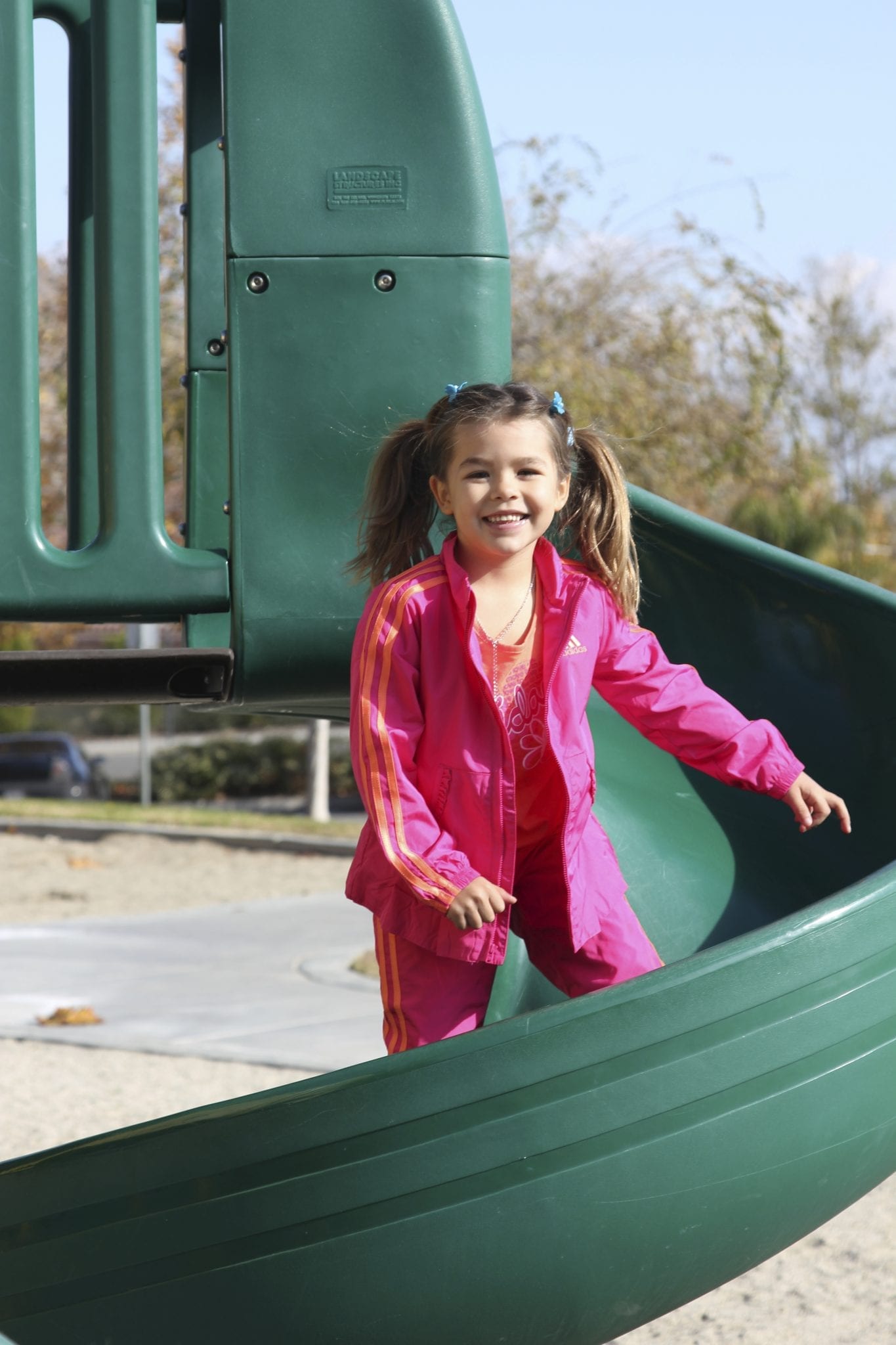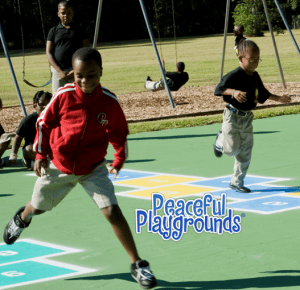January 2005
The new rules and behavior expectations.

New behavior expectations state, “go down the slide only on your bottom.”
Corvallis Gazette-Times
As a second-grader slips down the covered slide at Philomath’s Clemens Primary School on his tummy Thursday morning, school behavior assistant Cheri Stouder blows her whistle.
Stouder has been watching a group of first-grade and kindergarten students playing during lunch recess and has already given several reminders about the safe way to slide.
She calls the boy over and asks him, “Do you remember how we go down the slide? On our bottoms.”
“I didn’t do that,” the boy said.
“I know,” said Stouder before sending him back to play.
This type of exchange happens often on playgrounds at mid-valley schools, where rules reflect behavior expectations. Kids receive positive reinforcement when they are safe, and reminders or redirection when they do something dangerous or disrespectful.
When another student runs outside the cones and across the grass near the playground, Stouder blows her whistle again.
“Stay off the grass,” she says. “It’s muddy.”
Clemens is among the dozens of area elementary schools that have implemented Positive Behavior Support, a program developed at the University of Oregon that emphasizes positive and effective interventions.
Or, in student terms: Be safe. Be responsible. Be respectful.
Educators and school administrators have incorporated these expectations into school rules, including what happens on the playground. It’s not so much that the rules themselves are different from what parents may remember of their school days — it’s the response to infractions that has changed. The Positive Behavior Support program frames regulations in a way that makes sense to kids, and many schools have seen a decrease in discipline referrals as a result.
In some cases, schools have revamped the rules in ways that give students even more freedom to play. At Lafayette Elementary in Albany, where running on the playground had been banned, the decision was re-evaluated this fall and revised to “no chasing, no racing” on the blacktop and in the bark chip area, where a spill could be dangerous.
 Peaceful playgrounds
Peaceful playgrounds
This evolution in school rules has larger implications, says a national playground design expert, including a generation of children learning how to avoid and resolve conflicts. The shift may also encourage more kids to be physically active, helping combat a growing tendency toward obesity.
Melinda Bossenmeyer is a nationally certified playground inspector and creator of Peaceful Playgrounds, a program in more than 8,000 schools, including several in Corvallis. Bossenmeyer said initiatives aimed at getting more kids physically active and reinforcing behavior expectations deserve public support.
When she was an elementary school principal, Bossenmeyer said, she noticed a pattern in the discipline issues she was resolving.
“Administrators end up spending a great deal of time on problems that originate on the playground,” she said.
Peaceful Playgrounds incorporates developmentally appropriate activities into recess. And in the Corvallis public schools, it complements the Positive Behavior Support program expectations.
“Any kind of positive behavior management would most likely coincide with what we are trying to do as well,” Bossenmeyer said.
Bossenmeyer said the one thing she doesn’t support is telling kids what they have to do with their recess time.
“If we enrich their environment, they will choose to participate,” she said. “It’s nothing we have to regulate or enforce.”
Peaceful Playgrounds includes a blueprint for game markings, consistent rules and conflict resolution strategies. For example, instead of running to the playground supervisor to settle a dispute, students are taught that they have three options to work things out on their own: They can walk away. They can talk it through. Or they can play “rock, paper, scissors.”
With recess replacing PE as students’ daily outlet for physical activity, Bossenmeyer said, it’s more important than ever that all children are playing at recess.
Changes in society since she was a child make it more difficult for kids to get regular exercise, she said. When she was in elementary school, it was typical for kids to be playing outdoors in their neighborhoods until dark. A resident of Los Angeles, Bossenmeyer said parents today can’t just let kids play outside, and even going to the park can be dangerous if a child has to cross a busy street.
“Life has changed significantly,” she said. “It’s something that’s leading to this obesity crisis.”
Revising rules
At Lafayette in Albany, Principal Ellen Carlson said a group of teachers and school employees reviews school rules and suggested a change this fall when teachers, students and parents raised concerns about a rule against running on the blacktop and in the wood chips.
“We realized that it was not realistic to expect children to walk, but it was unsafe when they began to chase or play tag,” Carlson said.
The new rule, “no chasing, no racing,” is more relevant, she said, because it redirects children to play tag in the playfield, where it is safe.
Students at Lafayette learn the rules from teachers and from older students.
“Teachers read (the rules) to the kids and get their reaction,” Carlson said. “It’s helped us to realize that we needed to tweak the rules.”
Lafayette uses the Positive Behavior Support program, and Carlson said that discipline referrals are less frequent now that the rules are consistent with the behavior expectations.
Lafayette has also doubled the number of people supervising recess and other activities, and most of the time kids are walking to class instead of running in the hallways.
“Parents, as well as staff, have said they see a difference in the overall school environment,” Carlson said. “It’s been such a great thing for the school.”
Kids know the rules
Students as young as 5 and 6 at Clemens Primary School know the rules, and they’re good at policing themselves and each other.
When Stouder’s whistle blows, kids know to look up, and if they are not following the rules, they usually need only a quick reminder. During lunch recess on Thursday, only one student was asked not to use the slide when she continued to go down head-first after two warnings.
“Sorry,” Stouder told the girl. “Next recess you can try again.”
Clemens parents said they like the behavior expectations that are enforced at the school.
Two of Dawnia Kohn’s three children attend Clemens. Her son Taylor is in first grade and her daughter, Chanttell, is in kindergarten. The playground rules don’t put a damper on recess from her perspective.
“The kids seem to have fun,” Kohn said.
She said it’s good for the children to play at recess, and she’s heard no complaints about the rules. What she hears often from her kids is the behavior expectations.
“I hear it a lot,” Kohn said. “Be safe. Be responsible. Be respectful.”
By Becky Waldrop
Corvallis Gazette-Times – Corvallis, Oregon


 Peaceful playgrounds
Peaceful playgrounds